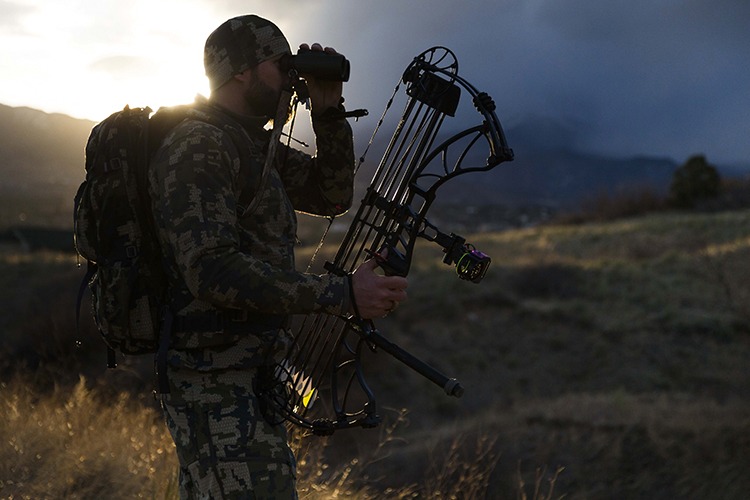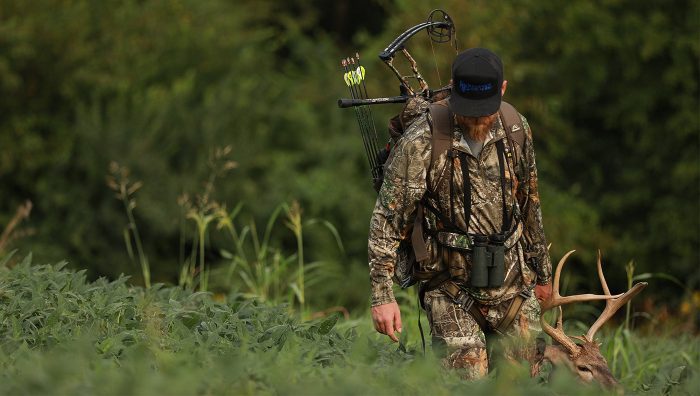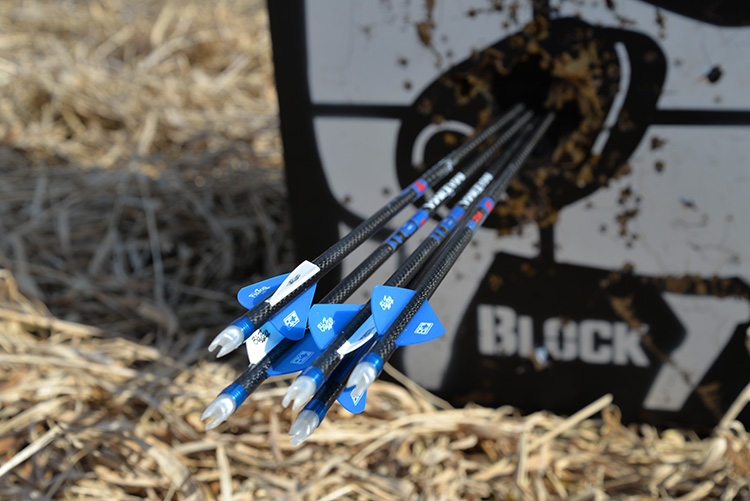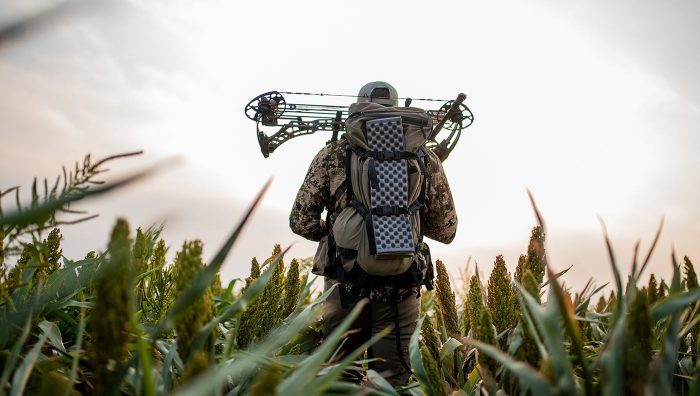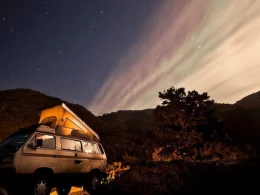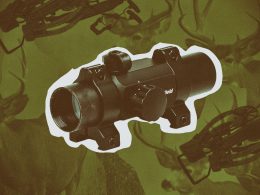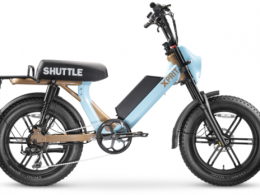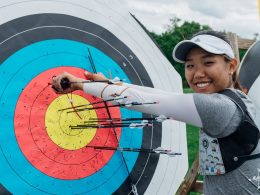Bowhunting is a challenge all its own. Your shot range is shortened dramatically when compared to using a rifle, and your shot placement also is much smaller. On top of all that, there is a lot more pre-season preparation that needs to be completed before you can even think about stepping foot into the woods. However, with all the added extra challenges you’re left with a much more gratifying hunt.
So, below we’re going to go over how to get started in bowhunting. We’re going to cover the basics on gear, techniques, and preparations needed in order to take a deer during your first season.
Table of Contents
Archery
First things first, you got to get a bow. The best thing you can do is find a local bow shop and let them set you up with a bow that’s perfect for you. If you don’t have one nearby then we’ll show you how to pick one out.
Draw Length
You need to find out your draw length. You can achieve this by measuring your arm span in inches and dividing by 2 ½. Stand with your arms out and palms facing upwards. Then have someone measure from the tip of one middle finger to the other. Then, take that number and divide by 2 ½. The answer is your draw length.
Draw Weight
Next, you’ll need to decide on your weight. Ideally, you don’t want anything lower than 40 lbs of draw weight. Any less than that and your compromising arrow penetration. Most adults will be able to pull back at least 50 pounds. While larger and stronger hunters are able to pull back 70, or even 80 pounds. Be realistic when picking out your draw weight. You don’t want to be struggling to pull back your bow just so you can say you pull 80 pounds of draw weight.
Shooting
If there’s one in your area then take an archery course. The teachers will show you how to properly shoot a bow and the techniques needed to do so. Having one on one instruction is a great way to learn how to shoot.
If you don’t have anywhere like that close by then purchase a target and practice on your own. Below we’ll go over a few steps on what you can use to get started.
1- Setting Up Your Target
Set your target up 20 yards away from you. Once you get comfortable at this distance you can begin to start moving it out in five-yard increments. Most bowhunters don’t take shots over forty yards and I wouldn’t recommend shooting over forty yards to anyone just starting out.
2- Stand Tall
Stand steady with your feet shoulder-width apart and angle your toes out slightly. To help you always find this stance you can take a piece of cardboard and stand on it then trace your footprints. Practice shooting on that cardboard for a month or so and then you can toss it out. By then you’ll know exactly where to stand.
3- Anchor
You need to have consistent anchor points every time you shoot. For example, you can rest your release hand against your face, set the tip of your nose on the string, or grip your release the exact same way.
4- Relax
Don’t grip the bow too tightly. This can create unwanted torque which can lead to inconsistent and inaccurate shooting.
5 – Straight
You’ll want to form as straight a line as possible from your grip hand back to your lead shoulder. Keep in mind that you don’t want to lock out your bow arm, keep the slightest bend in it. Also, keep a straight line from the tip of the arrow all the way back to your string arm elbow.
6 – The shot
There are many different techniques you can use for the actual shot. The easiest I’ve found is slowly squeezing the trigger on the release.
7- Finish
As the arrow leaves your bow you’ll want to finish naturally. Don’t pull back on your release arm or push forward with your bow arm. Allow the arrow to leave naturally.
Gear
When you first start out bow hunting you’ll need to pick up several pieces of gear to get you started. The first and most important is your bow.
Choosing your Bow
There are so many different brands and price points of bows out there that it can be a little overwhelming when you first start out. There are even bows now that cost a little less than $2,000, and that’s without all the gear added to it.
For beginners, you don’t need to spend that kind of cash upfront on a bow. A solid and brand new bow with all of the bells and whistles is going to run you around $400 – $500. The bells and whistles include a sight, stabilizer, arrow rest, string silencer, and more.
If you want something cheaper, then used bows are a great place to look. Some outdoor shops sell used bows. You can also scour garage sales on the weekend or check out Craigslist and Facebook marketplace. Here you can find good bows that won’t break the bank.
Arrows and Points
The arrows you pick out will need to be cut to the size of your draw length. Most outdoor shops can do this or you can do it yourself. Carbon fiber arrows are more expensive but are more durable than aluminum which can bend and affect their accuracy.
Field points are great for target practice so you can get your technique down. For hunting, you’ll want to use either fixed or expandable broadheads.
Expandable broadheads have razor-sharp blades that expand on impact. Making them more accurate when shooting. The issue with these is that sometimes the blades do not expand and you wind up wounding the animal instead of a quick and clean kill.
Fixed blades are arguably less accurate, but you don’t have to worry about your blades not expanding. You’ll find strong arguments for both from hunters, but most use fixed blades.
Clothing
You’ll need camouflage. Hats, shirts, pants, and boots help too. Depending on where you plan on hunting you might be able to get away with lightweight camouflage clothing for most of the season. If you hunt up north then you’ll need to dress appropriately for the weather. Heavy-duty jackets and pants that allow you to draw your bow back are needed. Underneath these items, you’ll want to layer up to retain as much of your body heat as possible.
Washing your clothes in scent-free detergent helps too. Deer have a great sense of smell and you’ll be much closer to them when bow hunting as opposed to rifle hunting. So, minimizing your scent will improve your chances of getting close enough to a deer to take a shot.
Stands and Blinds
Ground blinds can be an effective way to conceal yourself from deer. For beginners, it also makes the shot a little bit easier since you don’t have to adjust for the angle of shooting from up high down to the ground. It can make it more difficult to draw in deer though since you’re on their level and they’ll be able to see any movement. To help with this there are some blinds that allow you to shoot through screens that conceal your movement.
Tree stands are the most popular and arguably work better than blinds. You’re high up in a tree so the deer can’t see you which allows you to be able to draw your bow back without too much concern. Still, take it slow as any sudden movement could draw the eye of the deer.
If you’re hunting on private land or your own land then you could set up a permanent stand with approval from the land owner. If you’re hunting public land then a climbing tree stand will allow you to pack in the stand on your back and then pack it out when the day is done.
Finding Spots to Hunt
Your local Department of Game website will have a list of public land locations where you can hunt deer. You’ll just need to know that these are usually very pressured pieces of land and can make hunting difficult. However, if you can hunt on public land and be successful then you can hunt anywhere.
If you have friends or family with land then you can ask them if you could hunt it that season. If you don’t know anybody then you can call around or knock on the doors of landowners and ask politely if you can hunt. It usually helps to sweeten the deal if you promise them some meat.
What to look for When Hunting
After you’ve found some land to hunt you’ll need to learn how to find the deer. Food sources are key. Before the season even begins you’ll need to get out and walk the land and find deer signs and food sources.
Oak trees, crops, and fruit trees are all great spots to look at. One thing you can do is set up trail cams to ensure deer are actually in the spots you’re looking for. Once you’ve confirmed deer are in the area you can start to mark trees with orange marking tape so you know where to hang your stand once the season begins.
Final Thoughts
Bow hunting can be difficult when first starting out. Not only do you need to learn how to shoot a bow, but you’ll need to learn to locate deer and then you need to get within forty yards (ideally closer) of them so that you can ensure your shot is as accurate as possible.
However, you’ll find that harvesting a deer with a bow is extremely gratifying. All the work you put in during the offseason paid off and now you have a mount for the wall or meat for the freezer.
So, use some of the information above to help you get started on bow hunting for deer this season.

